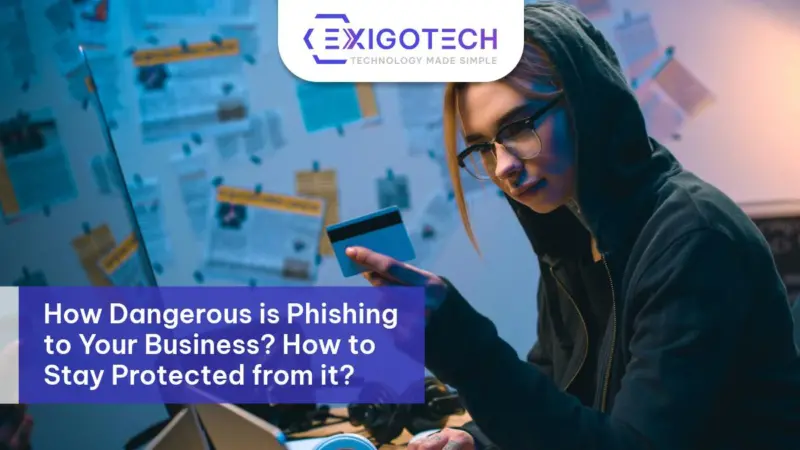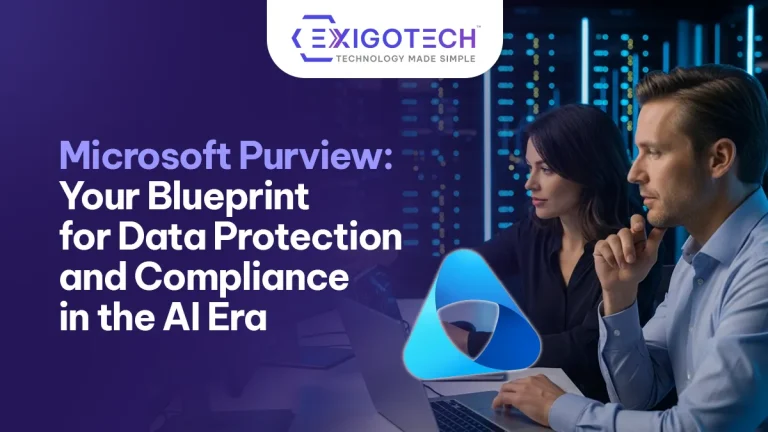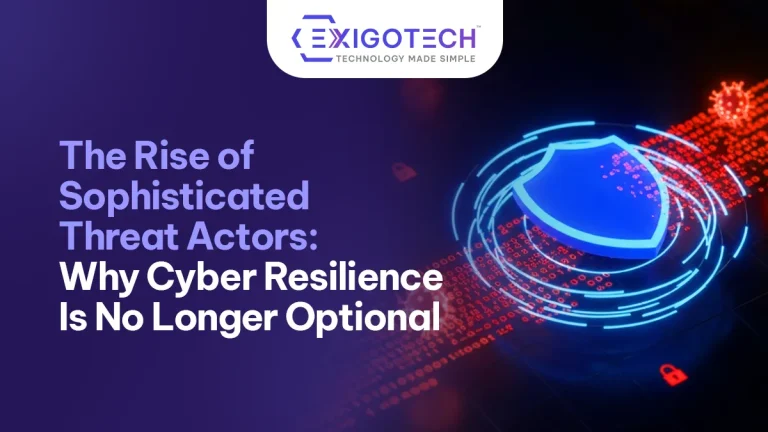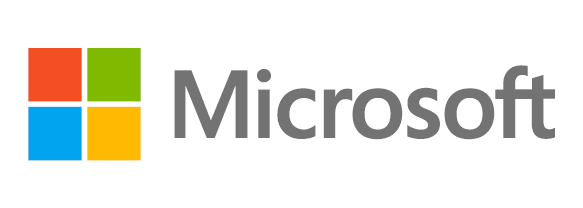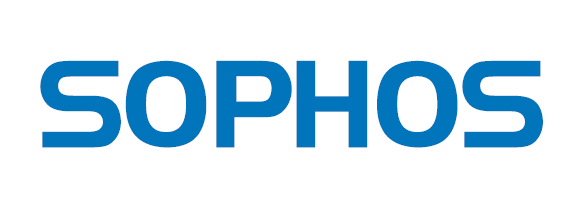You have probably come across the word ‘phishing attacks’. Do you know how dangerous phishing is to your business and how it can compromise your private and confidential information?
Read this blog to learn how dangerous phishing is and protect your business with Exigo Tech.
Phishing is one of the biggest cybersecurity threats that modern businesses are facing in this technology-driven era. Businesses today are relying increasingly on digitisation to keep the workforce connected. The rising usage of digital tools is the ideal invitation for cyberattacks like phishing.
Mitigating phishing attacks is becoming one of the top cybersecurity priorities for businesses. Let us understand what phishing is and why it is becoming a huge threat to today’s world.
What Is Phishing Attack?
In simple words, phishing is an attack that tries to steal your identity or money by tricking you into disclosing personal and confidential information. An email or a text is the most common way used by hackers to lure you into providing sensitive information. These hackers usually pretend to be an acquaintance, friend, or reputable company to gain your trust.
How Dangerous Is Phishing?
Even if one single employee is phished, it can create havoc in your business. If you think that changing the password after being phished will solve the problem, you are wrong.
Phishing is far more dangerous than you think.
Danger 1- Phishing is the entry point for a ransomware attack
Yes, you read that right. Ransomware attacks usually start with phishing. Hackers use phishing to trick the victim into opening an infected attachment. For example, one of the ransomware attacks can lock all your files in the system through an infected attachment and a large payment is demanded from you to get the files back. This shows how dangerous a phishing attack can be.
Danger 2- Loss of sensitive data and credentials
The most common motive behind phishing is to get access to users’ or organisations’ data. Once your credentials are stolen through the malicious link, you cannot change your password as you get locked out of your system and no access is available to you. Another massive danger phishing attacks have is you lose one, you lose all. For example, if you have the same credentials for multiple accounts, all your accounts will be hacked, and multiple bad actions will be taken by the hackers. This could pose a huge danger to your as well as your business’ data.
Danger 3- Types of phishing attacks are changing continuously
You can safeguard your business with safety measures if you know the nature of phishing attacks. But, with the evolution of modern technologies, the nature of phishing attacks is changing continuously. Every now and then hackers develop a new form or channel to carry out a phishing attack. This trend is extremely dangerous as hackers can attack in any unexpected way which makes your business more vulnerable to these attacks.
Danger 4- Almost all your information gets compromised
One infected link or attachment can compromise all your information from your accounts. Even if you give away only your email address, hackers can gain access to almost all of your accounts by resetting your passwords by using that email address. In this way, all your information can be compromised. That’s how dangerous phishing is.
What Are the Types of Phishing Attacks?
The motive of all phishing attacks is to acquire valuable data and sensitive information. Take a look at the 5 types of phishing attacks that normally take place.
Email phishing
- It is one of the most common types of phishing attacks and has been around since the early days of emails.
- Hackers first register fake domain names that look almost similar to real organisations and then several emails are sent to potential victims.
- Many phishing emails create a threat or a sense of urgency to get the recipient to act immediately without verifying the email’s authenticity.
- Phishing emails often want the victims to click on a link to submit the data on a fake website or download the malicious attachment to install malware on their systems.
Spear phishing
- In most of the other phishing types, mass emails are sent to as many people as possible. But spear phishing is more specific.
- Hackers already gather the personal information of the victim like name, job title, industry, email address, etc. to make the attack more personal.
- This information helps the hackers to customize the phishing email and it increases the effectiveness of the attack. Personalised phishing emails manipulate the victims to take action.
Whaling
- Whaling attacks target high-profile victims like C-level employees or other highly privileged people.
- Hackers carry out detailed research about the victim and instead of fake links or attachments, they come up with personalised messages.
- The goal of whaling is to get sensitive data about the organisation, like bank account numbers, tax IDs, business credentials, etc.
Smishing (SMS phishing)
- In the smishing technique, SMS is used to carry out phishing attacks instead of emails. The goal remains the same.
- SMS stating ‘your bank account has been hacked’ is the most commonly used message in smishing.
- This message contains the clickable link that asks you to enter your bank details to verify your identity. This way, hackers get access to your bank accounts.
Vishing
- Vishing is similar to smishing, but it is carried out by voice calls.
- Hackers call the victims and create fear among them by saying, ‘your bank account has been hacked and your account details are needed to solve this issue.
- Victims often give away the information with a sense of fear and urgency.
How to Protect Your Businesses from Phishing Attacks?
The most effective way to prevent phishing attacks is to not click on any suspicious links and think twice or even thrice before giving out any sensitive information to anyone. Apart from these basic things, multiple defence techniques are required to protect your business from phishing.
Deploy firewalls
- Firewalls are extremely important and effective at keeping hackers and phishers out of your system. They are shields to your business and hackers need to break them before launching a successful phishing attack.
- Having a strong firewall for your organisation helps you to improve your overall security and stop phishers.
Multi-factor or 2-factor authentication for your accounts
- Another defence strategy which makes accessing your accounts extremely difficult for hackers is 2-factor or multi-factor authentication (2FA/MFA).
- When enabled, 2FA is the extra step that is required to log in to your account after entering the login credentials. So even if your credentials are compromised, hackers cannot access your account as another step is required. This step requires you to enter the one-time code which is obtained on your phone via message, call, or code generator app.
Phishing awareness training for employees
- No security strategy can stop phishing attacks if your employees keep falling into the hacker’s trap. Hence, educating your employees about phishing is extremely important.
- Conducting regular training helps your workforce identify and avoid phishing attacks. Due to regular training, employees get an idea about what to do if any phishing email appears.
Conduct regular phishing tests
- Even if you regularly conduct security awareness training for your employees, conducting regular phishing tests lets you know if they are learning or not.
- These tests give practical experience for your workforce and give them an idea of what to do in case of an actual phishing attack.
Endpoint monitoring and protection
- Increased usage of digital tools produces many new endpoints that may not be completely secure. It is important to assume that your endpoints are under attack and be prepared. Having secured endpoints stop phishers from entering your systems.
What to Do If You Have Been Phished?
Act quickly and look out for the following points to reduce the damage of phishing.
- If you clicked on a phishing link or opened an attachment that installed malicious software on your system, update your system’s security software to remove the malicious software.
- Immediately change the passwords of all the accounts that have been hacked and of the accounts which have similar passwords.
- If you entered the bank or credit card information by clicking on a phishing link, cancel your card and get in touch with your bank immediately.
- Report phishing attack incidents immediately to concerned authorities like the IT department of your organisation, banks, credit card issuer, etc. to prevent further damage.
Protect Your Business from Phishing Attacks with Exigo Tech
It is imperative to stay protected from phishing to mitigate the risk of further severe cyberattacks.
Our IT team of experts at Exigo Tech can help you evaluate how well you are doing in terms of cyber security and help your business to be ready for phishing attacks. Reach out to us at or call 1300 EXIGOTECH (394 468) to secure your workplace.
We stay up to date with the latest cybersecurity trends and provide our expertise to keep your business safe. Get in touch with us todayI
FAQs
1. What is phishing?
Phishing is a cyberattack that uses malicious links or attachments to try and steal your personal information or install harmful software on your system.
2. What is a phishing email?
A phishing email is an email sent by hackers to lure victims to provide private and confidential information to commit fraud.
3. What to do if you click on a phishing link?
If you accidentally clicked on a phishing link, take the following necessary steps-
- Close the tab/browser immediately.
- Change the passwords you used on that site.
- Don’t enter any sensitive information like name, contact number, credit card number, bank details, etc. on the website.
- Run an anti-virus scan to check for any malicious software.
- Act Quickly
4. What is the difference between spam & phishing?
Phishing is about luring the victims to provide private and confidential information to commit fraud. Spam is unwanted emails coming into the inbox for advertisement and promotional purposes.
 Philippines
Philippines Australia
Australia Singapore
Singapore India
India Brendan Fazel | Nov 23, 2022
Brendan Fazel | Nov 23, 2022